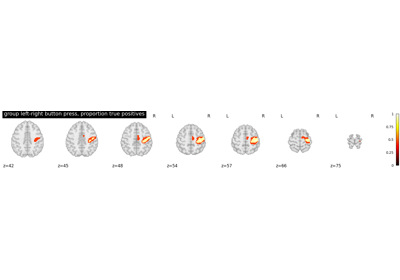Note
This page is a reference documentation. It only explains the function signature, and not how to use it. Please refer to the user guide for the big picture.
nilearn.glm.cluster_level_inference#
- nilearn.glm.cluster_level_inference(stat_img, mask_img=None, threshold=3.0, alpha=0.05, verbose=False)[source]#
Report the proportion of active voxels for all clusters defined by the input threshold.
This implements the method described in 1.
- Parameters
- stat_imgNiimg-like object or None, optional
statistical image (presumably in z scale)
- mask_imgNiimg-like object, optional,
mask image
- thresholdlist of floats, optional
Cluster-forming threshold in z-scale. Default=3.0.
- alphafloat or list, optional
Level of control on the true positive rate, aka true dsicovery proportion. Default=0.05.
- verbosebool, optional
Verbosity mode. Default=False.
- Returns
- proportion_true_discoveries_imgNifti1Image
The statistical map that gives the true positive.
Notes
This function is experimental. It may change in any future release of Nilearn.
References
- 1
Jonathan D. Rosenblatt, Livio Finos, Wouter D. Weeda, Aldo Solari, and Jelle J. Goeman. All-resolutions inference for brain imaging. NeuroImage, 181:786–796, November 2018. doi:10.1016/j.neuroimage.2018.07.060.
Examples using nilearn.glm.cluster_level_inference#

Second-level fMRI model: true positive proportion in clusters